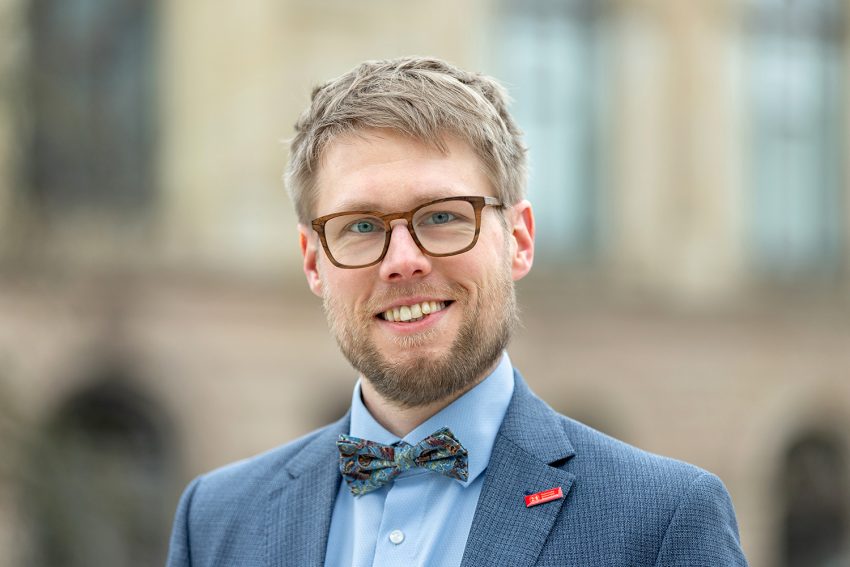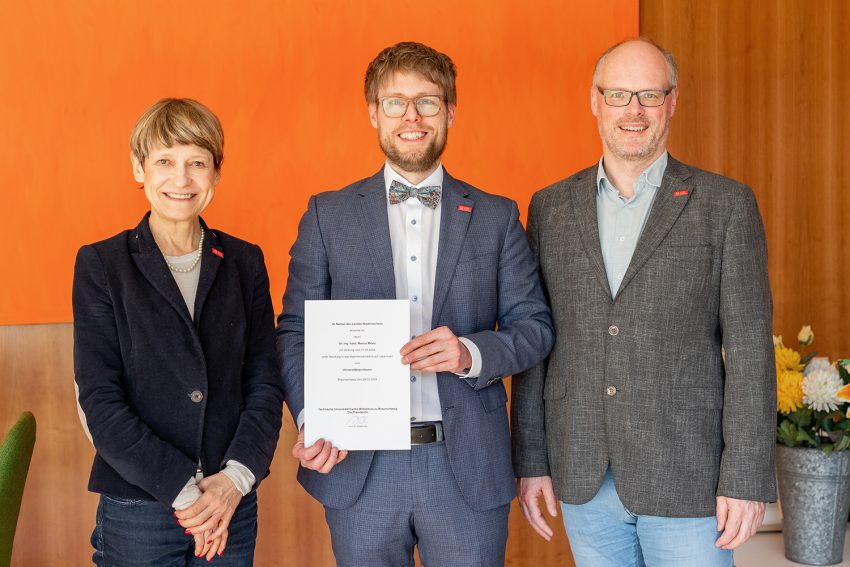Getting to the bottom of the soil with computer tomography Professor Marius Milatz is the new head of the Institute of Geomechanics and Geotechnics
Clay, silt, sand, gravel, rock – Professor Marius Milatz is fascinated by the diversity and complexity of natural geomaterials. Since the beginning of the summer semester, he has headed the Institute of Geomechanics and Geotechnics at Technische Universität Braunschweig. His research includes the use of computer tomography to study processes and phenomena in soils. In this interview, Professor Milatz tells us which other research projects he is focusing on.

Professor Marius Milatz is the new head of the Institute of Geomechanics and Geotechnics. Photo credit: Kristina Rottig/TU Braunschweig
Why did you choose TU Braunschweig?
TU Braunschweig is a renowned, large technical university in northern Germany, part of the TU9 Alliance, with a broad research environment in and around Braunschweig. Examples include the Federal Institute for Geosciences and Natural Resources (BGR) and the Coastal Research Centre (FZK). As a North German, I am delighted to be able to contribute to research and teaching in this exciting scientific environment and to carry out joint and interdisciplinary research with the various research institutions and industry at the location. TU Braunschweig’s research areas of “Mobility”, “Metrology”, “Engineering for Health” and “City of the Future” offer very good opportunities for this.
I first got to know the Institute of Geomechanics and Geotechnics, at that time still the Institute of Soil Mechanics and Geotechnics, at a meeting of the scientific staff of the North German geotechnical institutes in 2012. I was impressed by the professional dialogue between the scientific staff, the exciting excursions and the friendly atmosphere at the institute.
What exactly do you do in your research? How would you explain your work to someone unfamiliar with the subject?
I see myself as a geotechnical engineer specialising in soil mechanics. A more modern and somewhat broader term is geomechanics, a term that has also been used in the name of the Institute of Geomechanics and Geotechnics at TU Braunschweig for a few years now. While geotechnics is concerned with all types of foundations and construction methods in soil and with soil as a construction material, soil mechanics or geomechanics deals with a wide range of physical, in particular mechanical and hydraulic, processes in soil and rock in the narrower sense and with so-called geomaterials in the broader sense. Soil is both a substrate and a building material and has to absorb all the forces from structures such as dikes, dams, transport routes and the foundations of buildings and wind turbines.
As a soil mechanic, I am fascinated by the diversity and complexity of the manifestations of natural geomaterials, from clay, silt, sand and gravel to rock and artificial geobuilding materials such as cemented soils or geotextiles. I investigate and describe the physical properties and material behaviour of geomaterials in the laboratory and with the aid of computer calculations in order to provide engineers with practical rules for the design, calculation and construction of safe geotechnical structures and to improve and develop construction methods.

Appointment of Professor Marius Milatz with our President Angela Ittel and Professor Klaus Thiele, Dean of the Faculty of Architecture, Civil Engineering and Environmental Sciences. Photo credit: Kristina Rottig/TU Braunschweig
What are the main research areas and projects you will be working on at TU Braunschweig?
As a postdoctoral researcher in a research training group at Hamburg University of Technology (TUHH), I have spent the last few years working on imaging techniques, in particular computed tomography (CT), to investigate various processes and physical phenomena, especially capillary effects, in soils. I would like to introduce imaging techniques into basic geomechanical research and set up a laboratory at TU Braunschweig for hydraulic and mechanical experiments on various geomaterials using CT imaging. This will provide insights into the physical behaviour of materials at the microscale, i.e. the size scale of individual sand grains and smaller, in order to better understand the material behaviour observed at the macroscale. This includes natural processes such as the flow of water through the soil, capillary effects or the rooting of plants, but also technical processes such as the cementation or freezing of soil in geotechnical construction processes in civil engineering and tunnelling.
In addition to basic geomechanical research using CT imaging and subsequent computer-based simulations of material behaviour, I would also like to carry out applied research into improved, sustainable geotechnical construction methods, problems in mechanical tunnelling and issues relating to the interaction between soil, water and structures, such as those relevant to offshore wind turbine foundations and coastal protection. To this end, collaboration is planned with the construction industry, but also with other university facilities and institutes, including the Leichtweiß Institute for Hydraulic Engineering and the Large Wave Flume at the Coastal Research Centre in Hannover.
What motivated you to do research in this area?
I have always been fascinated by the enormous diversity of the physical behaviour of the natural materials soil and rock that surround us everywhere. My interest in geology, palaeontology and the natural sciences was sparked by my parents when I was a child. Geotechnical engineering allows me to pursue these interests as there are many interfaces with other disciplines, such as geology, and to contribute through research to the safe construction of the complex geomaterials that have formed over millions of years.
Can you describe your day-to-day work in three key words?
Down-to-earth attitude, curiosity, team spirit
